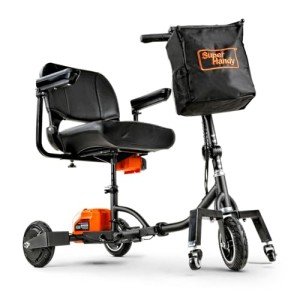What Is Mobility Aids And How To Use It

Understanding Mobility Aids: Enhancing Independence and Quality of Life
As society continues to age and individuals progressively seek methods to keep independence, the demand for mobility aids has never been more significant. Mobility aids, which incorporate a range of devices created to assist individuals with walking or moving, play a vital function in promoting mobility, improving security, and enhancing general quality of life. This article will check out the different types of mobility aids, their benefits, factors to consider for selection, and respond to some often asked concerns.
Types of Mobility Aids
Various mobility aids are offered, each created to deal with specific needs. The following table summarizes some of the most common types of mobility aids and their features.
| Kind Of Mobility Aid | Description | Best Suited For | Key Features |
|---|---|---|---|
| Canes | A portable stick offering support and balance. | People who require very little assistance. | Light-weight, portable, adjustable height. |
| Walkers | Four-legged frames offering stability. | Those requiring significant support while walking. | Foldable, some with wheels, added security features. |
| Rollators | Wheeled walkers with a seat for resting. | People requiring mobility with the alternative to rest. | Brakes, baskets for individual products, adjustable height. |
| Wheelchairs | Chairs with wheels for people with limited mobility. | Those unable to stroll or requiring comprehensive support. | Manual or powered options, customizable seating. |
| Scooters | Motorized devices for bigger distances. | Individuals with restricted endurance but requiring self-reliance. | Various sizes and styles, frequently portable. |
| Crutches | Support devices positioned under the arms or lower arms. | People recuperating from lower limb injuries. | Adjustable, lightweight, requires upper body strength. |
| Stairlifts | Mechanical devices for moving between floorings. | Users dealing with challenges in multi-level homes. | Personalized for different staircases, automated. |
Advantages of Mobility Aids
Mobility aids supply a range of advantages that can significantly enhance the lives of people facing mobility challenges. Some notable benefits include:
- Increased Independence: Mobility aids empower individuals to move freely without counting on others for assistance, consequently enhancing their confidence and self-esteem.
- Boosted Safety: Using mobility aids can lower the danger of falls and injuries, specifically for older adults or those with balance issues.
- Enhanced Quality of Life: By assisting in mobility, individuals can take part in social activities, attend occasions, and delight in life more totally, adding to better psychological and mental health.
- Rehab Support: After surgical treatment or injury, mobility aids offer necessary support and stability, assisting in healing and rehabilitation processes.
- Accessibility: Many mobility aids are designed to be utilized both inside your home and outdoors, ensuring that individuals can navigate different environments with ease.
Factors to Consider When Choosing Mobility Aids
Choosing the suitable mobility aid needs mindful consideration of several elements, including:
| Factor | Factors to consider |
|---|---|
| User's Needs | Evaluate the level of mobility required; think about whether the user needs short-lived or long-term help. |
| Physical Limitations | Assess the user's strength, balance, and coordination to determine the best kind of aid. |
| Setting | Think about the main environments where the aid will be used, such as home, outdoors, or particular surfaces. |
| Weight and Portability | Ensure that the selected gadget is manageable regarding transportability and storage, specifically for outdoor use. |
| Budget plan | Mobility aids can be found in a range of rates; consider insurance coverage and readily available financing alternatives. |
| Adjustability | Select aids that can be changed for height and convenience to accommodate development or altering requirements. |
Regularly Asked Questions About Mobility Aids
1. How do I know if I need a mobility help?
Numerous factors can indicate the requirement for a mobility aid, such as problem strolling or balancing, fatigue while standing, or a recent surgical treatment affecting mobility. Consulting with a health care expert can offer assistance tailored to private requirements.
2. What types of mobility aids are covered by insurance?
Protection varies in between insurers, however a lot of provide choices for durable medical devices, which usually includes wheelchairs, walkers, and some types of walking canes. Contact your insurance coverage provider for particular coverage info.
3. Can mobility aids be used outdoors?
Yes, lots of contemporary mobility aids are designed for outdoor usage. Rollators, scooters, and some walkers are equipped with features for stability and ease of use on different surface.
4. How do I maintain my mobility aid?
Routine maintenance involves looking for any wear and tear, making sure that parts such as wheels, brakes, and frames are operating properly, and cleaning up the devices as needed. Following the producer's guidelines is essential for safety.
5. Exists a threat of ending up being dependent on mobility aids?
While some users might end up being reliant on mobility aids, they are created to promote independence and mobility. Slowly utilizing simply click the up coming webpage can boost self-confidence and help maintain physical strength and coordination.
Mobility aids are vital tools that empower people to conquer physical difficulties, promoting self-reliance and improving quality of life. By understanding the different kinds of mobility aids available, their advantages, and essential factors for factor to consider, households and caretakers can make informed decisions that best meet the needs of their enjoyed ones. With the best assistance, those with mobility difficulties can lead satisfying and active lives, complimentary to check out the world around them.

